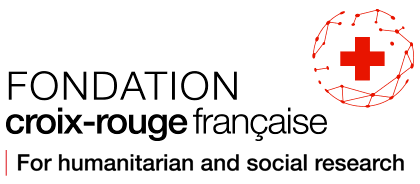The Oustouane and Ghzailé rivers, which stretch over the regions of Akkar and Bekaa in Lebanon, regularly flood the valleys where camps are accumulating for Syrian refugees displaced by the war. Dima El Khouri, a doctor of geography, had already taken an interest in the fate of Syrian refugees in Lebanon for her thesis. In this study, she combines issues of risk perception and social cohesion.
Your study jointly addresses the issues of risk perception and social cohesion in Lebanon. Is there a Lebanese specificity on these two points?
Lebanese society is organised according to a fixed denominational system, from the highest levels of the State to the smallest communities. Power is divided between 18 religious groups, who live together. This country, divided into communities, has been faced with a double economic and migration crisis for more than a decade. In the wake of the war in Syria, more than one million Syrians were welcomed into the country. That’s about 20% of the population. This is a major challenge, hardly conceivable for any nation, but which effectively took place in the cities of Lebanon. Faced with this brutal phenomenon, we must examine the factors that have enabled these refugees to settle as best they can in spaces marked by extreme processes of socio-spatial injustice. Therefore, in order to envisage a shared strategy for communication and awareness-raising, it is necessary to take this context into account, and particularly the mechanisms that produce and reproduce inequalities that affect all members of the population, whether they are of Syrian or Palestinian origin, whether they belong to the various Lebanese religious communities or whether they come from foreign countries.
What particular problem are the two rivers facing?
The study concerns two basins bathed by the Oustouane and Ghzailé rivers, which extend over the Akkar and Bekaa regions. These rural, border areas host the most vulnerable Syrian refugees, who are far less well off than those in the city. One third of the Syrian refugees registered in Lebanon are located in these regions, where their number is twice that of the Lebanese in some areas. The vast majority of them are housed in camps of different sizes, from a few dozen tents to several hundred, sometimes directly on the banks of rivers. These areas are regularly affected by flooding. The challenge of the study is to identify the levers that will increase the populations’ resilience to this risk.
Your research is in its preliminary stages and you still have a lot of interviews to carry out. What are your first observations?
Unsurprisingly, it is difficult to talk about a potential risk, such as a flood, when the most pressing concern for those exposed is to ensure that their children have food the next day. However, losing a hen, a goat or food reserves in a flood only adds to the disaster. Moreover, it turns out that people are less afraid of submersion than of the pollution that accompanies it. In people’s narratives, when the rivers overflow, the greatest fear is the smell and the threat of farmlands being poisoned.
We have also observed that the lack of social cohesion is an aggravating factor in the case of floods. Traditionally, populations upstream of rivers can warn of potential dangers. In the absence of links between Lebanese and Syrians in the camps, this information does not circulate.
Which real-world applications are expected at the end of your research?
The research is part of a wider scheme to provide technical solutions to flood problems. The social sciences are therefore mobilised within the framework of a Landscape Approach to take into account all aspects of the problem and to understand the context in which technical solutions can be implemented. The real solution, of course, would be geopolitical, economic, structural… And sometimes you get the feeling that you’re putting a Band-Aid on a wooden leg. But our job is to help the actors on the ground and to facilitate the implementation of a targeted response. Very concretely, one of the priorities is to establish a detailed mapping of the actors and their role in the implementation of links between refugees and society. Even in camps with only a few tents, there is a hierarchical system that regulates the flow of information. In larger gatherings, one can generally count on the support of a Shaweesh with wider social resources and links with the Lebanese owners. Similarly, it is important to take into account informal practices, cronyism, and corruption, which are fundamental in social relationships. Before we even think about the messages that will improve preventive behaviour, the first thing we need to do is to identify the channels through which these messages are disseminated.
Top photo: @Virginie Troit





